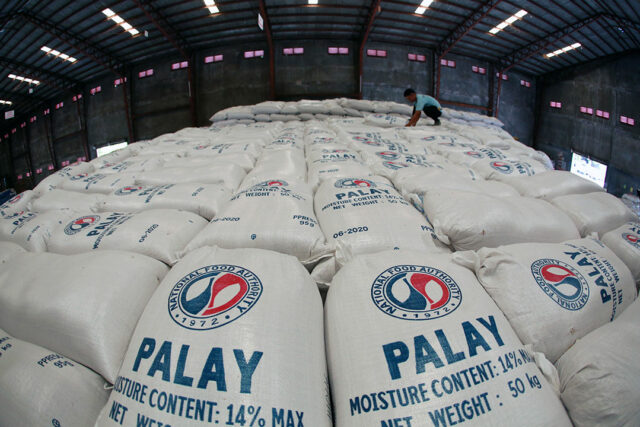EVERY WEEK or so, scientists issue another warning that the H5N1 bird flu is inching closer to exploding into a pandemic. Despite having contended with a pandemic that broke out less than five years ago, the US has no solid plan to handle a new one — nor have our leaders done anything to incorporate the lessons learned from the government’s less-than-ideal handling of COVID-19.
Too many Americans died from COVID because the public health community took too long to issue warnings, was slow to create tests to assess the situation, and was sluggish in shifting its response to fit the data on airborne transmission. The much-criticized lockdowns could have been less disruptive and saved more lives had they been periodically adjusted as data changed on who was most at risk and which activities were riskiest.
Already, some of the same mistakes can be seen in the response to H5N1, which started in poultry before a new variant began infecting the nation’s dairy cows. The US Department of Agriculture announced last week that it would start sampling the nation’s milk supply to test for the virus. California instituted a recall of some raw milk and raw milk products after samples tested positive. But there’s a lot more that could be done to reduce the odds of this situation leading to a pandemic.
Moreover, President-elect Donald Trump’s picks to lead the nation’s top public health agencies — the officials who would be in charge of any pandemic response — have prompted concerns among scientists and health experts. They include Robert F. Kennedy, Jr., a vaccine skeptic and raw milk enthusiast, for the top job of secretary of the Department of Health and Human Services. He also has ties to the California producer whose farm was the subject of the state’s recall after several batches of raw milk products tested positive for the virus. The farmer told Politico he’s been asked to apply for the position of “raw milk adviser” at the Food and Drug Administration (FDA).
Trump’s pick to run the Centers for Disease Control and Prevention (CDC), former Representative Dave Weldon, pushed false theories about childhood vaccines as a member of Congress and was a critic of the CDC and its vaccine program. And to lead the National Institutes of Health, Trump has named Jay Bhattacharya, author of the Great Barrington Declaration, which criticized the government’s COVID response and promoted the theory — based on bad science — that the pandemic would end quickly through herd immunity. Marty Makary, who Trump picked to head the FDA, promoted the same notion of herd immunity as he promised that even without vaccination, COVID would disappear in several months.
We likely won’t know how these officials might handle the next crisis until their Senate confirmation hearings early next year.
There have been periodic outbreaks of H5N1, commonly called the bird flu, in the domestic bird population since the mid-1990s. But while fewer than 1,000 people worldwide have tested positive for the virus since then, scientists are alarmed because it killed half of those known to be infected. In 2022, the virus started showing up in mammals — foxes, bears, raccoons, sea lions, porpoises, and minks — and then, in March of this year, in US dairy cows. Millions of US chickens have been euthanized to control outbreaks in flocks of poultry, and in October, officials confirmed that the virus had been found in a pig here for the first time.
In a study of supermarket milk last April, virus fragments appeared in 58 out of 150 samples. Scientists who conducted the study said heat from pasteurization would kill the virus. But raw milk from infected cows is swarming with live virus — enough to kill barn cats that have lapped up splatters.
At least 60 confirmed human cases of bird flu have been reported in the US this year, including two in Arizona. Most have been farm workers who had contact with livestock or poultry, and their symptoms were mild. More worrisome are the few cases whose origin remains a mystery, including a teen in British Columbia who was hospitalized with a mutated version of the virus and a California child who was diagnosed with moderate symptoms in November. There have been no confirmed cases of person-to-person transmission.
“In my opinion, it is a matter of time before we start to see documented human-to-human transmission of this virus… because we’re continuing to let this virus infect humans and adapt to people,” said Seema Lakdawala, an immunologist at Emory University School of Medicine.
To decrease that likelihood, she says efforts should focus on minimizing outbreaks among cattle. That means not just monitoring some milk samples but identifying individual infected cows and ensuring they are isolated and their milk disposed of safely so that it doesn’t make its way into irrigation water where it could infect other animals. She said that even if those cows aren’t killed, just isolating them could prevent further spread.
Each new infection allows the virus to make millions of slightly mutated copies, increasing the odds that one will acquire the ability to easily jump from person to person. A study published recently in Science showed that the variant currently spreading through hundreds of herds needs only a single mutation to gain the ability to attach to receptors on human cells.
Much remains unknown, including why bird flu hasn’t started a pandemic. But there will be another pandemic at some point, said Michael Osterholm, an epidemiologist who has advised every president since Ronald Reagan and is now director of the University of Minnesota’s Center for Infectious Disease Research and Policy. “The pandemic clock is ticking. We just don’t know what time it is,” he said.
Osterholm has investigated Ebola, Zika, and other deadly viruses. Still, coronaviruses and influenza are by far the most likely to blow up into global pandemics because they are easily transmitted through the air.
That means we should plan for the possibility — before it happens. And we need something more detailed than the National Security Council playbook drawn up during the Obama administration and famously ignored by Trump. It outlined organizing an initial pandemic response, such as connecting political leaders with scientific experts. But it didn’t include details for things like shutdowns, mask mandates, or other measures taken during COVID. Osterholm said drafting a new plan should begin with a bipartisan investigation into how COVID-19 was handled — like the 9/11 commission. “Not to point fingers,” he told me, but to prepare for next time.
A new playbook should also consider long-term sustainability. Osterholm said data available in spring 2020 showed COVID was so easily transmissible that the pandemic could drag on for years. And yet, nobody wanted to hear it.
He argues that the US and China could have saved many more lives with short-term, data-driven closures of restaurants and other high-risk settings when cases were rising. That strategy could have been sustained as long as the threat persisted. In China, which lifted its strict three-year-long zero-COVID lockdown before the threat had ebbed, the CDC estimates 1.4 million people died in the first three months the restrictions were eased.
A new preparedness plan should also include more protection for essential workers and their families. During 2020, many people with known risk factors or elderly relatives at home were thrown into dangerous work situations.
The US endured waves of deaths in the winter of 2020-2021 when many Americans could no longer tolerate staying in their homes. Sustainability would matter even more if the next pandemic had a higher fatality rate.
While it’s often repeated that more than a million Americans died, we lack an analysis of how they got infected and how they were in harm’s way. It wasn’t about bad behavior but inadequate policy. Good policy is designed to work for human beings the way we are. With COVID, it was all created on the fly. It doesn’t have to be that way next time.
BLOOMBERG OPINION















